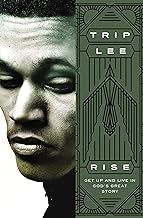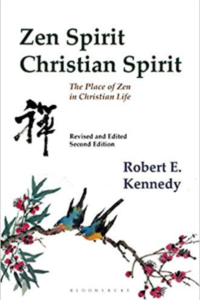Organized Religion: Harmful or Beneficial
Karl Marx said, “Die Religion … ist das Opium des Volkes” which is translated to “Religion is the sigh of the oppressed creature, the heart of a heartless world, and the soul of soulless conditions. It is the opium of the people.” and paraphrased as “Religion is the opiate of the masses.” Marx’s (using the phrase to make a structural-functionalist argument about organized religion) point being that religion was a tool of escapism by people; focusing their attention on promises of other-worldly pleasures as a means to cope with life’s harsh truths.
With over 10,000 distinct religions in the world and about 84% of the world’s population being affiliated with one religion or more, one cannot help but ask: What is organized religion? Why is it so important to people? Why has something that is supposed to be some sort of guide and a source of succor and hope to people been used as a tool of oppression? Why is something seemingly designed to unite divisive?
Organized religion basically involves a structured system of worship, with a large following. This system includes strict rules and dogmas which are reproduced over generations with slight or no modifications. Examples include the Abrahamic religions – Judaism, Islam, Christianity, and others like Buddhism, Shintoism, Confucianism, etc.
As of 2005, according to Encyclopaedia Brittanica, the top 10 religions in the world based on numbers – rough estimates (the list included only organized religions) were
- Christianity with 2.1 billion members, constituting about 33 percent.
- Islam with 1.5 billion members and a percentage of about 21 percent.
- Hinduism with 900 million members, making about 14 percent.
- Buddhism had about 346 million members, constituting about 6 percent of the total.
- Sikhism had 23 million, making about 0.36 percent.
- Judaism with 14 million, making 0.22 percent.
- Bahaism had 7 million members, making 0.1 percent of total members
- Confuscianism with 6.3 million members making 0.1 percent.
- Jainism had 4.2 million members, also making 0.1 percent.
- Shintoism had about 4 million members.
Religion in itself may not be a harmful concept, in the sense that it is just a codified list of precepts targeted at some sort of spiritual awakening. Religion brings a sense of meaning to people’s lives, without which they would feel empty and depressed. It gives people a sense of hope and is said to help curb man’s excesses.
Organized religion, however, is a distinct term from and secondary to religion. The distinction here is in the structure and in how much power the structure holds. A close analogy is one of a random local store owner vs Amazon, for example, both engage in commerce, however, one has so much scale, influence, and reach that it’s able to assert its power upon more people.
Religions typically were politically integrated into the cultures that birthed them, so, the Orisha of the Yoruba for example had their structure woven around the King (Oba) as much as it was woven around their priests, so, one could argue that all religions are inherently structured, however, a way to differentiate the template with more recent and modern religions is by which ones seek to expand beyond their cultures or see it as a mandate to spread beyond their current boundaries, expanding their influence by conquests, crusades and evangelism (for example, Pentecostal Christianity, Islam) versus those who are content to remain associated with their people/culture alone (for example, Osun worship).
Organized religion has been a worthy tool in the hands of men to cause a lot of harm to the human race. Looking through the history of the black church in the USA and/or colonialism in Africa, it’s seen how religion, particularly Christianity was used to justify slavery and as a medium through which conquests were made. Churches were segregated and sermons were doctored in hopes to convey docility on the slaves. Washington’s Museum of the Bible displays a “slave Bible,” published in 1807, which removed portions of Scripture including the Exodus story as it was believed that it would inspire thoughts of rebellion. It was also suggested to these slaves that Africans were descendants of Ham and were cursed and therefore it was fitting that they were in captivity.
What about the crusades in the bid to promote Catholicism in the medieval period? Generations of cultures were destroyed and over 1.7 million people were murdered, and these figures might even pale in comparison to deaths caused by Muslim extremists.
Organized religion alludes to an organization with laid out modus operandi: There is a pretentiousness that comes with it, with an aim to create an effect of wonder, fear, trepidation, and false reverence. It regards one man as being more worthy than all others with respect to accessing the deity (access that more often than not, comes with a fee) and with being sort of immune to the scrutiny and/or accountability imposed on the followers. The highest positions in these places are positions that inspire all sorts of evils in the hearts of men that desire the power those seats have, so, the more power they have, the more liable to corruption the leadership becomes since most the authoritarian structures are answerable to “the father in heaven” alone.
The spirituality that is seen in unorganized religion is more beneficial in the sense that it is more primal, it is more cultural and it is usually a part of the life of a people, it is accepted by all and practiced by all. Here, every man and woman are equal and unequal partakers of that priesthood, there are no laws but rather generally acceptable mores and codes of behavior. There are no canons. No deliberate attempt to impress. The deity is accessible to all and is in all. The desire to create a machine, to control others, and to make money from that control is non-existent. Here everyman gives his deity his sacrifices directly, either alone or as a community. It is a more personalized experience.

Rise: Get Up and…

I Am Restored –…

Vexed: Ethics Beyond Political…

Angels: What the Bible…

Unearthing the Bible: 101…

Rooted: Life at the…

Beyond Christianity: African Americans…

The Religions Book: Big…





